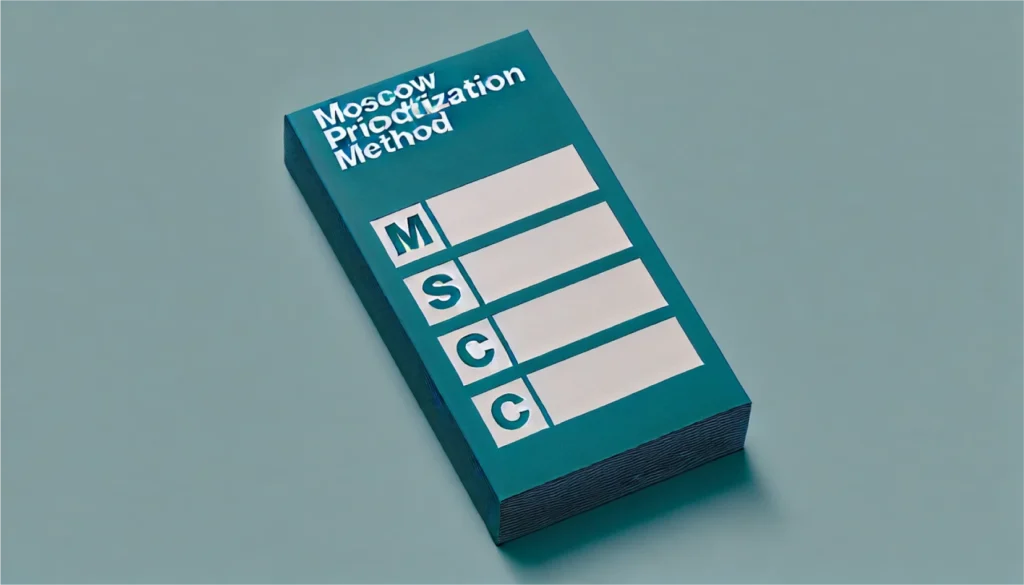What is the MoSCoW Prioritization Method?

In the ever-evolving landscape of project management, prioritization plays a pivotal role in ensuring the success of initiatives. Without a clear roadmap, teams can often find themselves overwhelmed, unable to determine what to focus on first. This is where the MoSCoW prioritization method steps in—a structured and straightforward approach to sorting through tasks, goals, and deliverables. Developed to streamline project workflows, MoSCoW helps organizations determine what’s truly essential and what can wait.
In this article, we’ll dive deep into the MoSCoW method, exploring how it works, its benefits, challenges, and why it remains one of the most effective prioritization techniques in modern-day project management.
What is MoSCoW Prioritization?
The MoSCoW prioritization method is a framework designed to categorize tasks, requirements, or deliverables into distinct priority levels. Its name is derived from the acronym:
- Must Have
- Should Have
- Could Have
- Won’t Have (or Would Have)
Originating in the 1990s, the method was introduced by Dai Clegg while working at Oracle, primarily to enhance clarity in requirement gathering and prioritization. Over the years, it has gained popularity across various industries, particularly in Agile project management.
The brilliance of MoSCoW lies in its simplicity. By clearly labeling each task, it eliminates confusion and ensures that everyone involved understands what needs to be done immediately versus what can be postponed or omitted.

How the MoSCoW Method Works
The MoSCoW method follows a systematic approach to ranking tasks based on their urgency and importance. Here’s how it works:
1. Identify All Requirements
Begin by listing out all tasks, goals, or requirements of the project. This ensures that no critical detail is overlooked.
2. Assign Priorities
Categorize each item into one of the four MoSCoW categories:
- Must Have: Non-negotiable items essential for project success.
- Should Have: High-priority tasks that are not critical but add significant value.
- Could Have: Nice-to-have items that don’t drastically impact the project if omitted.
- Won’t Have: Tasks that are agreed to be excluded in the current scope.
3. Facilitate Team Discussions
Collaborate with stakeholders to ensure consensus on the prioritization. This step is vital to avoid conflicts later on.
4. Monitor and Review
As the project progresses, revisit the prioritization to adapt to any changes in scope, resources, or timelines.
Example in Action:
Imagine you’re developing a new mobile application:
- Must Have: Core functionality (e.g., user login, payment gateway).
- Should Have: Additional features like push notifications.
- Could Have: Custom themes or advanced analytics.
- Won’t Have: Integration with wearables (for now).
This clarity ensures that your team focuses on delivering the most impactful features first.

Benefits of the MoSCoW Prioritization Method
1. Clarity in Task Allocation: MoSCoW provides a clear framework for assigning priorities, reducing ambiguity and confusion among team members.
2. Enhanced Team Alignment: By involving stakeholders in the process, the method ensures that everyone is on the same page, fostering better collaboration.
3. Optimized Resource Utilization: Resources are finite, and MoSCoW helps allocate them to the most critical areas, ensuring maximum impact with minimal waste.
Advantages of Using the MoSCoW Method
The MoSCoW prioritization method is celebrated for its practical advantages, making it a preferred choice for teams across various domains. Here’s why:
1. Focus on Critical Deliverables: By categorizing tasks into clear priorities, MoSCoW ensures that the team focuses on the “Must Haves” first. This guarantees that the core functionalities or requirements are addressed, leaving no room for oversight.
2. Flexibility in Changing Priorities: Projects often encounter changes in scope or unexpected challenges. MoSCoW allows teams to revisit and adjust priorities as needed, ensuring adaptability without derailing the entire project.
3. Improved Decision-Making: The structured framework of MoSCoW simplifies decision-making, especially when faced with tight deadlines or budget constraints. Teams can quickly identify what to deliver and what to defer.
4. Enhanced Communication: MoSCoW provides a common language for discussing priorities, minimizing misunderstandings among stakeholders. This shared understanding fosters smoother collaborations.
5. Better Time Management: By focusing on what’s essential, teams can allocate their time efficiently, avoiding wasted effort on less impactful tasks.
Challenges and Limitations of MoSCoW
While the MoSCoW method offers numerous benefits, it’s not without its challenges. Being aware of these limitations helps teams mitigate potential issues:
1. Difficulties in Stakeholder Agreement: Reaching a consensus on what constitutes a “Must Have” versus a “Should Have” can be contentious. Stakeholders often have differing priorities, leading to lengthy discussions and potential conflicts.
2. Risk of Misinterpretation: If not properly explained, the categories can be misunderstood. For example, stakeholders might assume “Won’t Have” means the task will never be done, rather than being deferred.
3. Overuse of ‘Must Have’: A common pitfall is overloading the “Must Have” category, diluting its purpose. If too many items are marked as critical, the prioritization loses its effectiveness.
4. Dependency Issues: Some tasks may span multiple categories, causing dependency challenges. For instance, a “Could Have” feature might depend on a “Must Have” task, complicating implementation timelines.
5. Applicability Limits: While MoSCoW works well for projects with clear deliverables, it might be less effective in exploratory or highly creative endeavors where priorities are fluid.
Categories of the MoSCoW Prioritization Method
To fully leverage the MoSCoW method, understanding its categories is crucial. Let’s delve deeper into each:
1. Must Have
These are the non-negotiables. Without them, the project is considered a failure. They represent the minimum viable product (MVP) or the critical components needed for the project to function.
• Examples:
- In a website launch, “Must Have” could include basic navigation and content display.
- For a car manufacturer, it would be components like an engine or brakes.
2. Should Have
These items are important but not critical. They add significant value but can be delayed if time or resources are limited.
- Advanced search filters on an e-commerce platform.
- Customizable color options in a product line.
3. Could Have
These tasks are desirable but optional. Their absence doesn’t negatively impact the project, making them the lowest priority.
- Animated transitions in a mobile app.
- Decorative features in an office building design.
4. Won’t Have (This Time)
These are agreed-upon exclusions for the current project cycle. They may be revisited in future iterations.
- A multilingual feature in a product’s first release.
- VR integration in a gaming app’s initial version.
When to Use the MoSCoW Prioritization Method
MoSCoW isn’t a one-size-fits-all solution, but it excels in certain scenarios:
1. Agile Projects: MoSCoW is a natural fit for Agile methodologies, where flexibility and incremental development are key. It helps teams manage backlogs and prioritize sprints effectively.
2. Resource-Constrained Projects: When time, budget, or manpower is limited, MoSCoW helps identify the most critical deliverables, ensuring that essential goals are met first.
3. Complex Projects with Multiple Stakeholders: The method’s structured approach makes it ideal for projects involving diverse teams, ensuring alignment and minimizing conflicts.
4. Tight Deadlines: For projects with looming deadlines, MoSCoW streamlines priorities, focusing on what can realistically be achieved within the given timeframe.
5. Product Development: MoSCoW is widely used in product development, particularly for defining MVPs and prioritizing features based on customer needs and business goals.

MoSCoW in Project Management
The MoSCoW method has found a prominent place in project management, particularly in Agile frameworks like Scrum and Kanban. Here’s how it contributes:
1. Enhanced Sprint Planning: MoSCoW helps Agile teams organize backlogs and allocate tasks to sprints based on priority levels.
2. Clear Stakeholder Communication: By defining and agreeing on priorities upfront, MoSCoW minimizes scope creep and ensures stakeholders are aligned with the project’s goals.
3. Effective Resource Allocation: Teams can allocate resources efficiently, dedicating time and effort to “Must Have” items without being sidetracked by less critical tasks.
The MoSCoW prioritization method is more than just a framework; it’s a game-changer for teams striving for clarity and efficiency. By categorizing tasks into actionable priorities, it helps organizations deliver value while managing constraints like time and resources. Whether you’re navigating a complex project or developing a new product, MoSCoW empowers teams to focus on what truly matters, fostering collaboration and ensuring success.

